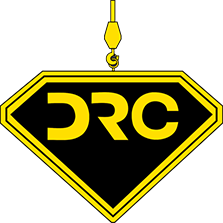Understanding the fundamental difference between rigging and lifting in crane operations is crucial. Rigging involves preparing and securing loads while lifting focuses on hoisting them. Proper comprehension ensures safety, efficiency, and precision in crane operations, preventing accidents and damage to materials or equipment.
Rigging and Lifting: What Are They?
Rigging involves preparing and securing materials or loads for crane lifting. It encompasses tasks like selecting appropriate equipment and fastening loads. On the other hand, lifting is the actual act of hoisting or moving loads using a crane or similar machinery. Both processes are integral to crane operations, ensuring that loads are handled securely and effectively.
The Focus and Scope of Rigging and Lifting
Rigging primarily concerns the preparation and secure fastening of loads. It highlights the steps involved in readying materials for lifting. Conversely, lifting centers on the physical act of raising or relocating loads using lifting equipment. This distinction clarifies the specific roles within crane operations, ensuring a safe process.
What Are the Skills Required?
Understanding principles, selecting appropriate equipment, and calculating loads accurately are necessary for rigging. In contrast, lifting demands expertise in operating cranes, controlling loads, and adhering to protocols. Each skill set plays a vital role in crane operations. Rigging focuses on preparatory tasks and lifting on the execution of lifting activities.
Importance of Crane Operations
Rigging holds importance by ensuring load stability, balance, and safety throughout lifting tasks. Conversely, lifting is essential for executing lifting operations by adhering to proper procedures. Together, these elements contribute to the seamless execution of crane operations, minimizing risks.
What About Regulatory Compliance?
In terms of regulatory compliance, rigging is subject to regulations concerning load securing, rigging hardware, and inspection protocols. On the other hand, lifting operations must adhere to standards related to crane operation, load capacity, and operator certification. Compliance with these regulations ensures the safety and legality of crane operations.
The Essence of Training
The training curriculum for rigging centers on principles, techniques, and equipment usage. It aims to develop skills in load assessment, rigging configurations, and hazard identification. This approach ensures proficiency in preparing and securing loads for safe lifting operations.
Alternatively, the lifting curriculum focuses on crane operation, load handling, and safety procedures. It focuses on enhancing proficiency in crane control, load manipulation, and situational awareness. This training ensures skill in executing lifting tasks while prioritizing protocols.
Recognizing the interdependence between these skills is crucial in comprehensive crane operations training. Proficiency in both areas ensures seamless coordination between preparing and executing lifting tasks. This synergy emphasizes integrating rigging and lifting training for well-rounded crane operation expertise.
Rigging and Lifting with Purpose
In summary, rigging involves preparing and securing loads, whereas lifting focuses on raising or moving them. Understanding these distinctions is crucial for safe crane operations. Highlighting their complementary nature, both skills work hand in hand for crane operators. Together, these skills optimize efficiency throughout crane operations.
For comprehensive training in rigging and lifting, get in touch with us at Diamond Rigging & Crane.


